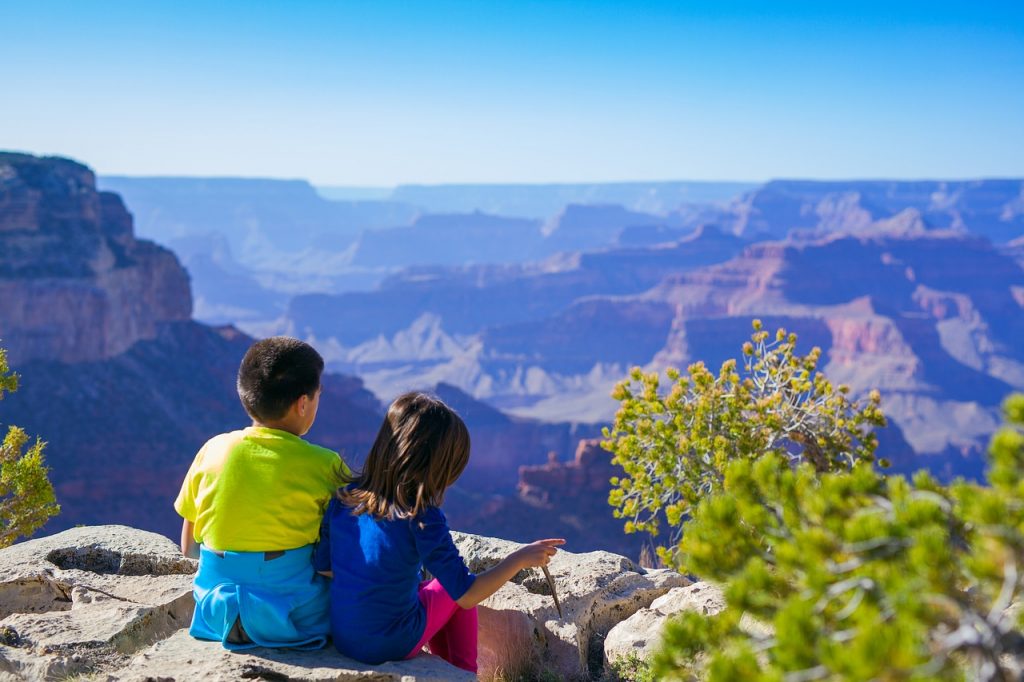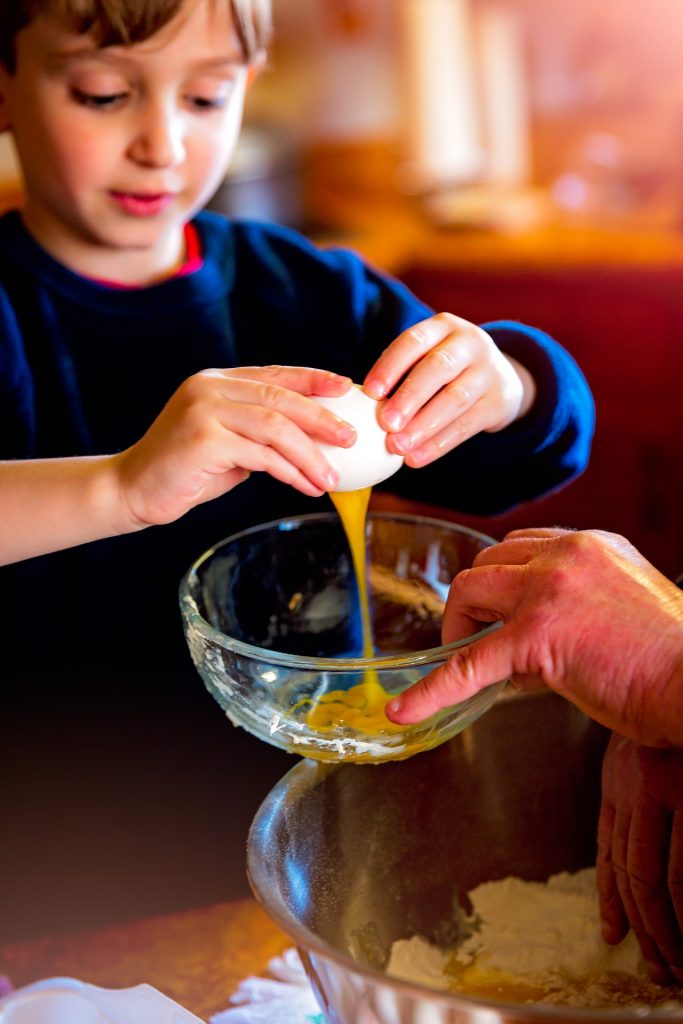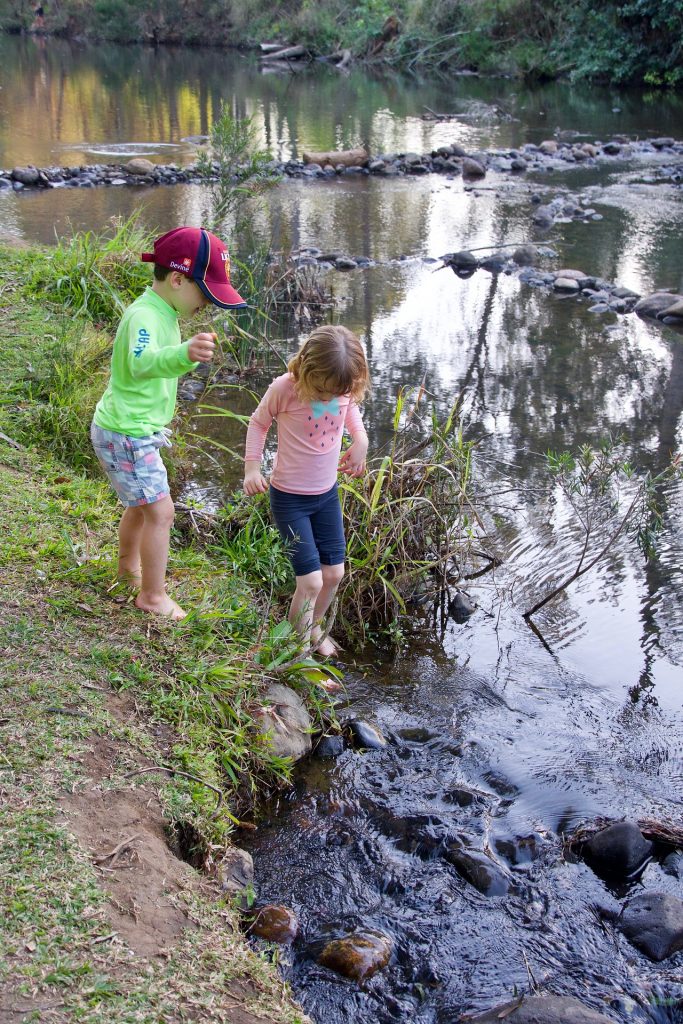Reading and math are important, but there are equally important skills that kids aren’t taught in school. As parents, it is up to us to model healthy lifestyles for our kids, and we can do so with green parenting practices. By showing our kids that their family strives to make eco-friendly decisions with what we buy and eat, we can teach them what it means to be mindful citizens.
While they are young, we can foster kids’ innate curiosity and love of nature. We can explain why it is important to protect the planet and each other. We can show them the necessity of knowing how to treat one another, how to recycle and to grow their own food, helping them grow up to be compassionate and environmentally-conscious citizens.
Here are some other green parenting ideas to help you teach your kids to protect the earth and each other:
Teach kids to conserve water
Often, kids are unaware of just how much water they use in a day —and they’re also unaware of why that’s a bad thing. As parents, it is up to us to teach our kids why it is important to conserve water and show them ways to do so.
 Teach kids to respect nature, animals, and each other
Teach kids to respect nature, animals, and each other
One of the best ways you can teach your kids to be environmentally conscious is to spend a lot of time outdoors. The more time they are allowed to explore nature, the fonder they will be of it. Use outdoor opportunities to discuss why it is important to preserve nature.
Watch Wall-E
Introduce your children to the concepts of consumerism and environmental damage by watching the Pixar film Wall-E with them. A loveable trash-collecting robot is a great ambassador to help you talk to your kids about the importance of making eco-friendly decisions.
Teach kids how to recycle
Kids should learn to recycle from an early age. Begin by explaining why to recycle, then move on to teaching how to recycle. Teach kids how to identify different recycling labels on packaging materials. Design a recycling station in your home, then teach your kids to organize it by types of recyclables, such as paper or plastic.
Teach kids to grow food
Plant a garden or build a greenhouse as a family. When your kids grow plants, they learn that food doesn’t actually come from a grocery store. They will marvel at their ability to grow something they can eat and enjoy right in their own backyard.
Teach kids how to shop for food
Additionally, teach your kids how to shop for food. Take them to the local farmers market to buy fresh produce. Then take them with you to the grocery store and teach them how to distinguish natural foods from processed foods.
Teach kids how to cook food

Along these same lines, teach your kids how to cook their food. In our fast-paced culture, more people are buying fast food or cooking quick and easy processed foods. Instead, use the produce you bought at the farmers market to cook a meal with your children. This is hands-on learning at its best!
Teach kids where waste goes and find eco-friendly alternatives
From the time they are little, kids are taught to throw away their trash; however, they’re not always taught where it goes after that. Parents should talk to their kids about where waste goes and why it is important to look for eco-friendly alternatives. Explain that much of our waste has nowhere to go besides the landfill — and take a trip to the dump so your kids can see.
Teach kids to buy secondhand
Make it a family practice to buy secondhand. Kids need to learn that clothes, books, and household items aren’t disposable, so we should be selective when it comes to shopping. Likewise, encourage your kids to wear their clothes until they have outgrown them, and then to pass them on to someone else.
Teach kids how to upcycle
Upcycling is a way to reuse items to make something new rather than throwing it away. For instance, instead of tossing items into the garbage, encourage your kids to think of ways they can turn their trash into treasure. This encourages kids to use their imaginations and creativity, as well as to consider the value of things they already own.
Remember, small changes can make a big difference
Rather than feel overwhelmed, give yourself permission to start small. Small changes in your home or apartment can really add up. Over time, the changes you implement each month will become part of your family’s green routine. Plus, your kids will be learning these valuable lessons right alongside you.
Kids absorb the knowledge available around them, so make sure they understand that eco-friendly lifestyle choices are good for both your family and the environment. When included in environmentally motivated family decisions (and clued into the larger reasons behind them), kids can respond in creative and enthusiastic ways — which makes them more likely to maintain an environmental mindset throughout their lives.
You might also like these articles:
- Six Activities to Teach Kids about Water
- Five Easy Ways to Teach Kids to Save Water
- Conservation for Kids: Top Tips and Tricks
From time to time, Water – Use It Wisely features articles from guest bloggers who write about topics related to water and water conservation. The author of this post, Jackie Nunes, is a blogger at WonderMoms.org. She is a former pediatric nurse and now a full-time homeschool educator. She and her husband have three children. Their middle child suffered a traumatic brain injury when she was 4. Now 11 years old, she is hearing impaired and uses a wheelchair. Jackie and two other moms created Wonder Moms as a project to share real talk, helpful information, and practical advice with parents of kids who have intellectual disabilities, Down syndrome, autism, language and speech delays, deafness, chronic illness, and traumatic brain injury.


